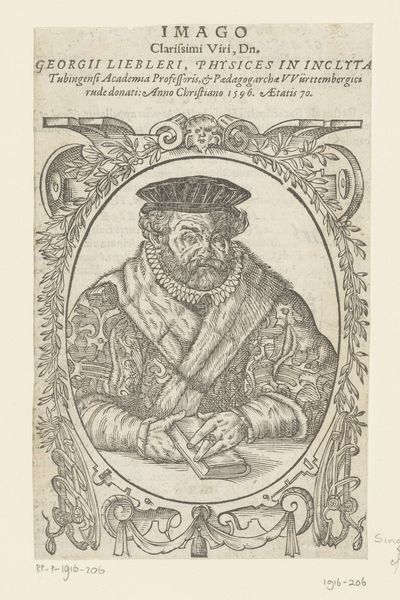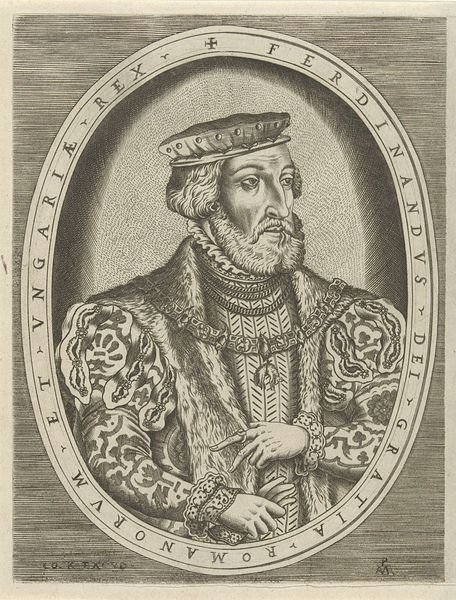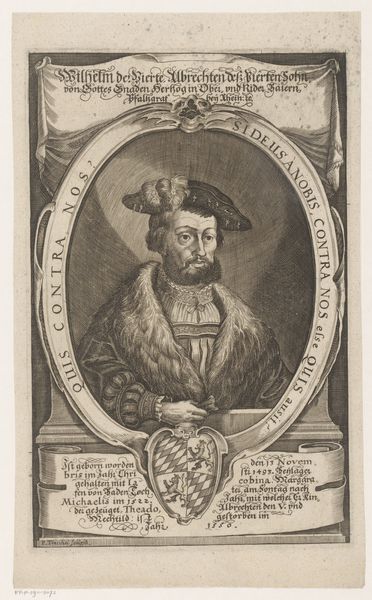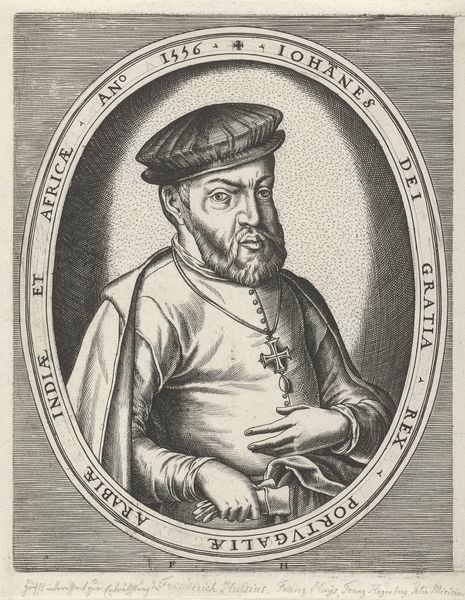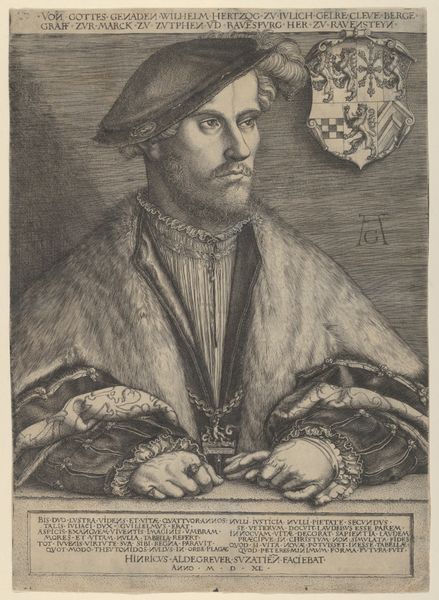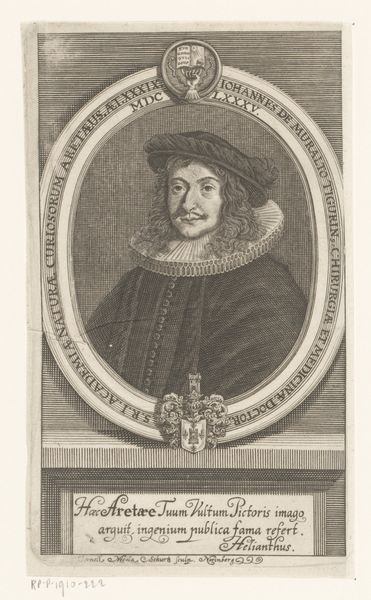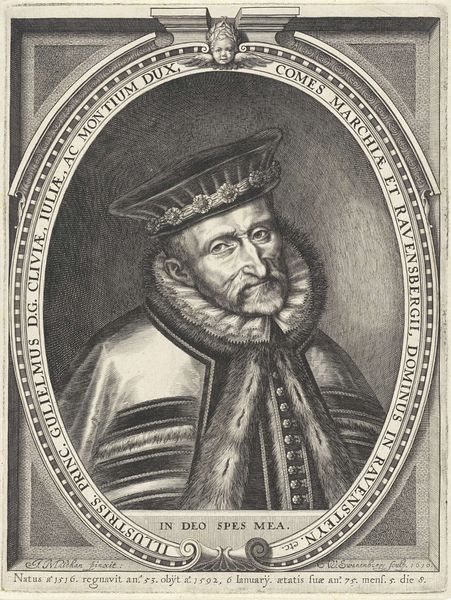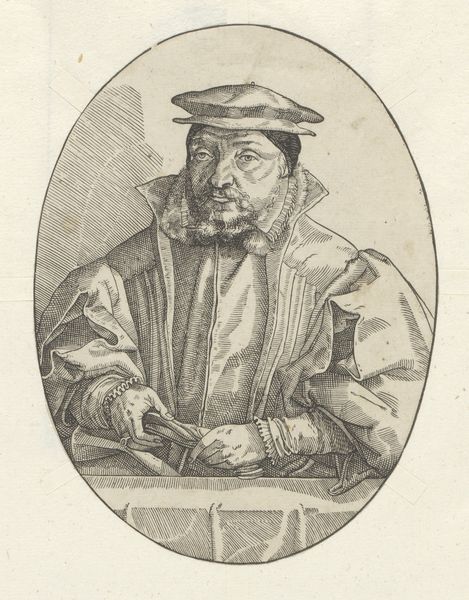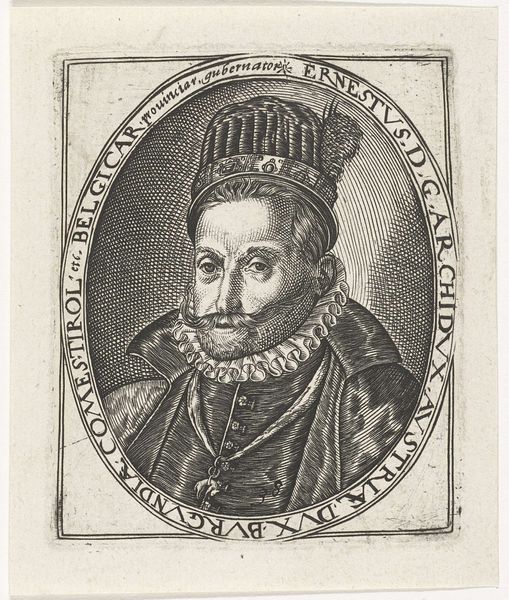
print, engraving
#
portrait
# print
#
11_renaissance
#
northern-renaissance
#
engraving
Dimensions: height 66 mm, width 58 mm
Copyright: Rijks Museum: Open Domain
Curator: Welcome. Let's discuss this intriguing print: "Portret van Thomas More," an engraving made between 1508 and 1543, now residing at the Rijksmuseum. It’s believed to be the work of Hans Holbein the Younger. Editor: It strikes me as intensely detailed, despite its diminutive size and monochrome palette. The lines are incredibly fine, conveying a great deal of texture, particularly in More's clothing. The engraver’s technique is noteworthy. Curator: Absolutely. And consider the historical context: Thomas More was a complex figure. A humanist scholar, lawyer, social philosopher, author, and statesman, and ultimately executed for treason. This portrait raises important questions about representation and power in Tudor England. The inscription framing More places him in a lineage, shaping how viewers perceive him. Editor: That's fascinating. I'm particularly drawn to the textures Holbein or his engraver achieved—the plush fur collar, the metallic glint of the chain. This speaks to the artist's intimate understanding of materials and the tangible world that More inhabited. Did his garments bear specific cultural significance for his time? Curator: Yes, sumptuary laws governed dress. More's attire suggests status and adherence to expectations befitting someone of his station. It reflects a society concerned with visually reinforcing hierarchies, but also allows for insights into Thomas' personal standing and preferences. The print acts as an exercise in visualizing early sixteenth-century power structures and societal aspirations. Editor: The creation of an engraving involved intense labor, too—a process reliant on particular materials, skilled labor, and networks of exchange. Examining such processes resists a view of the artwork as divorced from social relations, right? Curator: Precisely. These works of art reflect, inform and impact the values circulating through the era. Prints were used to disseminate ideas, reinforce the establishment, and also became tools for subversion, so its circulation in a society controlled by such strict governance offers further meaning. Editor: It's a thought-provoking intersection of art and social history. I appreciate how you highlight the way we can glean knowledge through a focus on materiality and making. Curator: It enriches our understanding by providing layers of interpretation beyond simple visual consumption. We learn that art reflects and influences lived experiences of all social ranks within Tudor England.
Comments
No comments
Be the first to comment and join the conversation on the ultimate creative platform.


